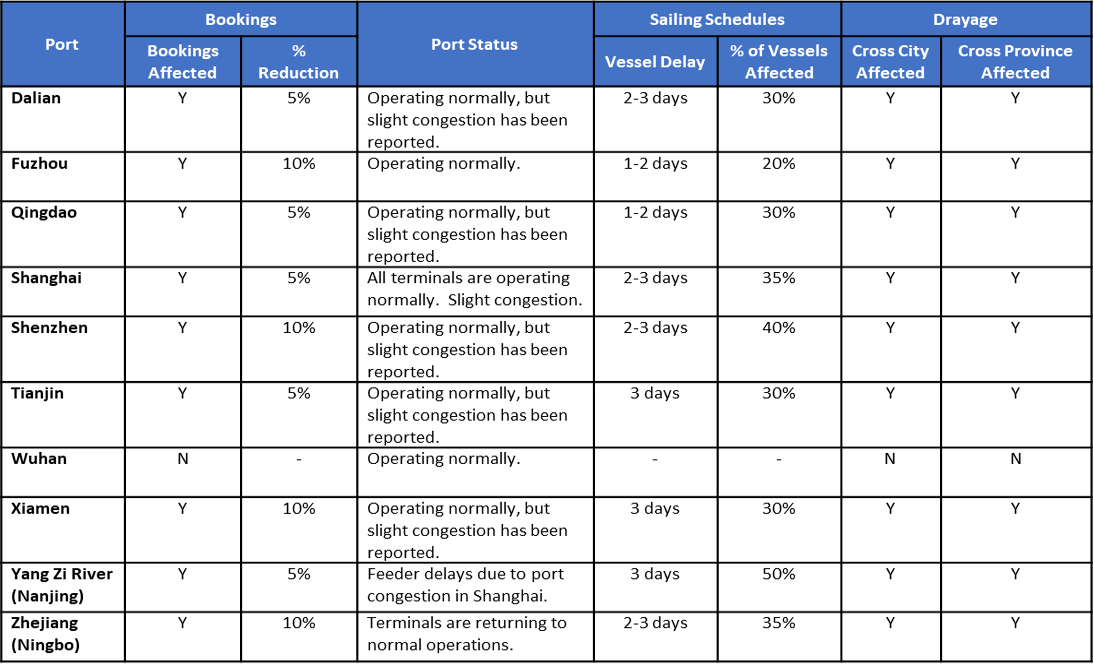New COVID-19 cases continue to surge across China despite the country’s draconian containment policies. Nationwide, new infections climbed to 7,475 on November 7 according to health authorities, with the southern metropolis of Guangzhou accounting for nearly a third of all new infections. Other hard hit provinces include Guangdong, Xinjiang, Qingdao, and Henan.
By global standards the increase was modest, but for China, who aims to eliminate COVID flareups as soon as they emerge, the outbreak has been significant. Officials in economically vital cities, including Beijing, are demanding more PCR tests for residents and lockdowns for neighborhoods and districts to stop the spread. By some estimates, 200 lockdowns are currently in place, with the longest and harshest in highly securitized regions.
In many parts if the country, the lockdowns, quarantines, and travel restrictions continue to cripple manufacturing operations, further disrupting global supply chains. While some facilities in affected areas are operating in closed-loop environments, output is expected to be roughly 30% of normal capacity. However, in many high- and medium risk areas, factories have been forced to close their doors. Factory delivery across much of the country has also been affected by restrictive transport policies, impacting export delivery even though the ports are operating “normally.”
Beijing’s unrelenting campaign has come at great economic and social cost. Public frustration and resentment have grown in recent weeks, as the incessant mass testing and stringent lockdowns – sometimes lasting months on end – take their toll on weary residents. Angry protests have broken out across the country in a rarely seen challenge to the CCP. In northeastern China, seven people were arrested over the weekend following a clash with authorities enforcing quarantine restrictions. Videos of people leaving Zhengzhou on foot to escape the harsh curbs that forced staff to live and work onsite – including hundreds of workers from China’s largest iPhone factory – have gone viral.
Meanwhile, the yuan weakened against the dollar and Chinese stocks tumbled this week amid the economic uncertainty caused the virus curbs. According to data released by the General Administration of Customs, both Chinese exports and imports declined in October – 0.3% and 0.7% respectively – marking the first slump since COVID upended the world in 2020.
Health officials have warned that China could be hit by a new wave of infection as winter approaches, leaving many to fear another cycle of government-enforced lockdowns. As a result, forecasters expect China’s trade to weaken further in the coming weeks.
Regional Updates
Chongqing
Several districts in Chongqing have gone into lockdown, with all non-essential businesses closed including industrial zones. Production delays and supply chain disruptions are expected in high-and medium-risk areas. Low-risk areas within those districts remain operational, although with reduced staffing levels. While the remainder of the city remains fully operational, trucking capacity will be significantly impacted as a daily negative PCR test will be required to enter or leave risk areas, with security checkpoints ensuring compliance. Flight disruptions are also possible at Chongqing Jiangbei International Airport.
Guangzhou
After a surge in cases over the last few days, Guangzhou – the “factory floor of the world” – has become China’s latest COVID epicenter. Many districts have imposed varying levels of restrictions and lockdowns, but so far the city has not imposed a blanket lockdown. Public transit services have been suspended across the city and mass daily testing has been rolled out, with infected persons and close contacts – ranging from neighbors to those living in the same building or residential compound – transferred en masse to centralized quarantine camps. While residents living in high-risk areas cannot leave home, those in low-risk areas within locked-down districts are allowed to go out for groceries and necessities. Businesses in three districts have been ordered to close.
Qingdao
Qingdao entered into a lockdown this week, with most staff working from home until further notice. Our partners in the region have reported that both sea and air freight operations have not been significantly impacted by the restrictions.
Wuhan
Although there have been a few newly confirmed cases this week, work-from-home orders have been lifted. All operations at terminals, warehouses, and customs are running smoothly.
Impacts on Terminal / Drayage Operations



